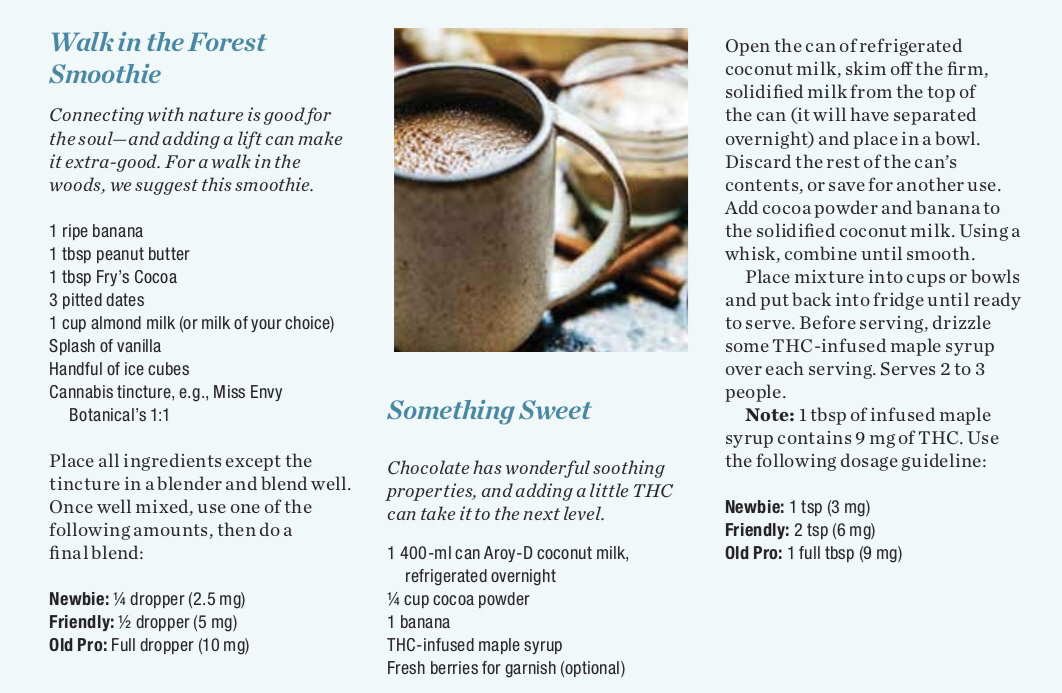A new approach to feeding friends who are grieving, by Alica Forneret
When a person is grieving, we want to do everything right.
We stress over every opportunity to support them: How do I say the right thing? When do I show up? What do I bring to make them feel better? Should I mention their loss or ignore it?
We can’t answer all these questions with simple one-size-fits-all answers.
But one of the simplest things we can do—no questions asked, no hesitation required—is to bring food.
But when it comes to helping in times of grief, what we drop on the doorstep can take many forms, and in that time of need we have a chance to feed someone something that will not only fill their belly but also truly represent our connection with them and respect their unique ways of grieving.
And sometimes that might just mean that those soul-filling, tailored meals can include cannabis-infused goods from your home kitchen.
COOKING FOR A GRIEVING FRIEND OR FAMILY MEMBER
I can tell you right now: it’s not a cliché or myth that casserole dishes fly in from every angle when someone dies.
The fridge shelves fill with soupy glass dishes—because they’re quick and easy for you to cook last minute, and they’re also quick and easy for someone in plan-stress-cry-repeat mode to serve to the carousel of mourners who drop by.
But when we have the opportunity to support someone, we can do more than just feed with calorie-rich meals that hang in the gut.
We can heal.
Just because a loved one has died, it doesn’t mean a grieving person’s taste buds have, so give them something that speaks to their preferences and tastes.
Even more importantly, it’s an opportunity to help them focus on themselves, when they’re ready.
WHY YOU SHOULD CONSIDER CANNABIS IN YOUR RECIPES
Years ago, Village Bloomery owner Andrea Dobbs was seeking new purpose in her career and was considering the option of becoming a death doula.
Though she has taken a separate path to owning a dispensary—now known for its exceptional knowledge regarding medical use of cannabis— she can speak at great lengths about how cannabis can positively impact the many tiers of end-of-life and grief experiences.
“It’s not something I naturally turn to, but cannabis can help me tune in and sit and be with myself. And that’s what I encourage people to do,” says Dobbs. “To let themselves be sad. To let the tears run out quietly and be there with themselves.”
See also: Meet the Queen of Green: Hilary Black
Elly Beggs from the BC Compassion Club Society notes that “by choosing cannabis and other plant-based medicines, patients learn self- empowerment—they choose how to heal on their own terms while hopefully avoiding the side effects and risks of other substances. Self-medicating with cannabis can help lift our mood and give us a euphoric shimmer to draw positive thoughts from.”
These points speak to an important part of grief: there are many ways that grief impacts our day-to-day lives, and all individuals must navigate their loss in a different way.
Grief can begin as far back as diagnosis and last for entire lifetimes beyond loss, so the impact can be felt across many lives—those dying and those supporting.
“One of the things that often happens is that when we support families of people who have acute illnesses, there’s a lot of stress and anxiety in the caregiving stage, so we recognize that,” says Dobbs.
“It’s good to take care of the person who has these [health] challenges—their challenges are usually easier to define, like tremors or seizures. But as a care provider you’re also exhausted, anxious and sad.”
As the friend of someone in this situation—a caregiver or, later, someone reeling from the death of a loved one—you can take action in many ways, including the simple acknowledgement of their suffering, stress and hardship.
Supporting someone who uses cannabis through their grief can also go beyond what you bring to them.
Because grief can often become incredibly isolating, it can be worth getting someone out to explore his or her relationship with cannabis and edibles with a larger community.
We experience loss that makes it hard to leave the house, pick up the phone or just simply care about anyone other than our dead loved one.
It can make us feel like no one understands, or no one cares, so finding support within a larger community of people healing in a similar way can be an immediate touch point of support for someone grieving.
See also: COLUMN: Women are key to the cannabis green rush
“Accessing cannabis in a medical dispensary like ours can help people feel less alone,” said Beggs. “There is a large and welcoming medical cannabis community that allows people to process their grief within a larger context of collective healing.”
And if you’re the kind of person who wants to show up with food in hand, there are many ways to include cannabis in that offering.
HOW TO INCLUDE CANNABIS IN YOUR CARE PACKAGE
Making a tasty cannabis dish for a loved one starts the same way as making any kind of food: by choosing a great recipe.
It’s also important to consider the person who will be consuming the cannabis and what his or her preferences and tolerances are.
“Control the dose effectively for each person. The worst thing in the world is to feel super-sad, then have way too much THC,” says Dobbs.
A FEW DISCLAIMERS FROM OUR EXPERTS
“What is important and crucial to understand is dosage. We recommend a ‘start low, go slow’ approach to edibles, meaning it is advisable to start with only a small amount (one-third or onequarter) of any healing treat, then wait one to two hours, depending on your digestive system, before eating more,” says Beggs.
“The key thing is to be very aware of dose—when you’re grieving, you’re in a very fragile place,” Dobbs says. “Look at what they’re already doing and what they have in place.” If they have a hot bath at night, introduce the THC that way. If they’re a tea drinker, make some tea with honey.
“Just ask yourself,” says Dobbs, “which modality fits their life the best?”


This story originally appeared in the BotaniQ Magazine’s print publication. Click here to download and read the whole issue.



















